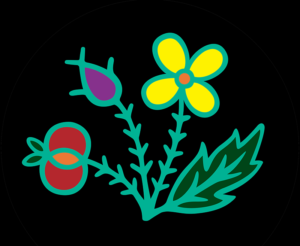Biindigen. Welcome.
Ojibwe.net is an independently run non-profit website. We welcome inquiries about collaborative projects.
| Chimiigwetch | maanda | gaa | gnawaamdamyeg | maanda | gaa | zhibiimaan | Anishinaabemowin. |
| Big thanks | this | (past) | you all looked at it | this | (past) | it is written | Anishinaabemowin. |
| We thank you very much for looking all that is written here in Anishinaabemowin. | |||||||

Our Purpose
This site represents many things, most of all, it is evidence that Anishinaabemowin is alive and well. One component of a living language is one that is not only spoken fluently, but also used creatively. Unfortunately, Anishinaabemowin is also defined as endangered because we are losing speakers faster than we are gaining them. This is why saving the language has become of utmost importance in many communities – on the rez, in the cities, in schools, in homes, in the lodge; where there are elders who speak the language and where there are none. We have created this cyber space so that the ancient sounds are not lost and can be connected to anyone willing to listen, learn, and labor with us in the effort to maintain Anishinaabemowin. We are humbled by our teachers and those who have preceded us in this work.
About Anishinaabemowin & Dialects on Ojibwe.net
What is Anishinaabemowin?
Anishinaabemowin is a language subfamily in the group known as Algonquian. Anishinaabemowin includes Ojibwe, Odawa, and Potawatomi which originally had more in common than they do today.
At the signing of the Treaty of Greenville in 1795 the peoples in the Great Lakes identified themselves as the People of the Three Fires Confederacy and shared a language (Anishinaabemowin) that supported that peace. These three fires were political, linguistic and social groups.
A Shift in the Language
As the removal and reservation era went on, communities became more insular with language usage (and the language was actively being suppressed). Being removed and confined changed the Three Fires from political groups to ethnic groups. Today we recognize these three languages as separate but also related. Fluent speakers of Ojibwe and Odawa can understand one another as the languages are still closely related. Potawatomi has deviated more. Ojibwe territory is so broad it has numerous dialects centered in different geographic locations.
On Ojibwe.net
Ojibwe.net primarily offers a large number of learning materials in the western Ojibwe dialect with many examples of the eastern dialect, especially in the advanced material. This is because most of the students and teachers we support use these dialects. In the spirit of inclusion, we try to include these differences and explain them when they appear. Don’t let these differences discourage you!
A Living Language is Fluid
A living language is a fluid changing thing. The Anishinaabemowin of the past no longer exists today because living languages change with use and although we know many of the words and phrases used today have been in use for thousands of years, speakers today are using the same words, and new words, to describe the ever-changing world around us. Think about English, it is global, pervasive, and alive. There are multiple dictionaries, multiple accepted academic writing styles (e.g., MLA versus APA), and multiple truths about how we use words. When a language becomes endangered the borders become more contested and limited, the definitions of what is “correct” become more rigid. It becomes easy to get caught up in our differences rather than focusing on our ability to expand our knowledge and find common ground. Aambe Anishinaabemotaadidaa! (Let’s speak Anishinaabemowin to one another!)
Our Team
Special Thanks
We would like to thank the many fluent speakers, community members, and helpers who have contributed to this website. Special thanks goes to Michael Zimmerman Jr., Leonard Kimewon-ba, Frank Bartley, Angela Marie Mesic, Sheila Feay-Shaw, Maurina Paradise, Shannon Noori, Francis Fox-ba, Helen Fuhst, Autumn Ellie Mitchell, John Paul Chalykoff, Randy Yarger (for the knottiest of tech trouble) and many more! Chi-miigwech! We have loved working with yous.
 Ojibwe.net logo design by Neebin Southall
Ojibwe.net logo design by Neebin Southall




